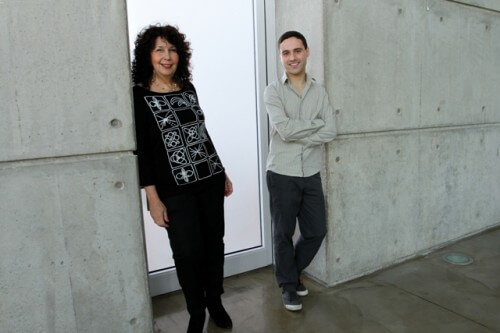to be or not to be? live or die? This is one of the most important decisions a living cell must make

to be or not to be? live or die? This is one of the most important decisions a living cell must make. Each and every cell in our body contains a genetic "instruction file", which executes, when necessary, a "cellular suicide" plan. Despite its tragic nickname, it is an essential program: it prevents cancerous cells or virus-infected cells from spreading. In addition, under appropriate control, the cellular suicide program plays a central role in embryonic development: thus, for example, the development of fingers and toes is done through the planned death of the cells located between them, a process that results in separate fingers.
The main program responsible for the cell's ability to end its life is "Apoptosis" - a process in which the cells shrink and disintegrate into small pieces, which are finally eaten by neighboring cells. In addition to apoptosis, another important process involved in determining the cell's fate is "autophagy" - "self-eating" during which the cell ingests and breaks down its proteins and organelles. Autophagy is, in a sense, double-faced: it allows cells to survive in times of distress by breaking down unnecessary and even harmful components, but on the other hand, it can cause the death of the cell when self-eating is carried out excessively.
It has been known for some time that there is a complex relationship between apoptosis and autophagy, but scientists still have difficulty identifying the proteins that underlie this relationship. Prof. Adi Kimchi, from the department of molecular genetics at the institute, and the research student from her group, Assaf Rubinstein, believed that it is possible that dual-purpose proteins exist, which are able to control both processes, thus enabling direct and effective communication between the two programs for killing cells. In a series of experiments - done using various scanning methods and gene silencing methods - it was discovered that there are indeed such linking proteins, but the researchers were surprised when the identity of one of them became clear: a main player in the autophagy process, called Atg12. In addition to its well-known activity in autophagy, the researchers discovered that Atg12 also has a dramatic effect on the execution of the apoptosis process - without Atg12, the cells' ability to commit suicide in response to stress is significantly inhibited. "This was a big surprise, because until today it was known that the exclusive role of this protein is in autophagy", explains Assaf Rubinstein. After identifying the protein, the scientists approached the more complex task: to understand exactly how Atg12 controls apoptosis.
With the help of Miriam Eisenstein, from the Department of Chemical Research Infrastructures, Rubinstein and Prof. Kimchi identified a specific site in the Atg12 protein, which is similar to the site found in known apoptosis proteins. This site binds to a family of anti-apoptotic proteins called Bcl-2, and inhibits their activity, thus promoting cell death. Could it be that the site identified on the autophagy protein works in a similar way? Their discovery, published in the journal Molecular Cell, was that the autophagy protein Atg12 is indeed capable of binding to Bcl-2 proteins, thus promoting death through apoptosis. Furthermore, the study shows that the role of Atg12 in apoptosis does not depend on the role it plays in autophagy, because both processes are carried out by different regions of the protein: interference with its function as an apoptosis promoter did not harm the autophagy process, and vice versa - interference with the autophagy process did not prevent the protein from promoting apoptosis.
This research may have implications in the field of cancer treatment. In many cases, the cancer cells "silence" the cell death pathways by increasing the levels of Bcl-2 proteins, thus allowing the tumor to grow unhindered. The researchers' preliminary results show that Atg12 binds Bcl-2 in a unique mechanism, so it is possible that this protein could form the basis of an anti-cancer drug that attacks Bcl-2 proteins.
The next question the scientists intend to delve into is: Why does the cell choose to use a single protein to carry out two separate tasks? "We suspect that in certain situations, when the cell is in a state of stress, it tries, in the first step, to activate the autophagy process, to try to save itself. If the attempt fails, he moves to the more extreme solution - suicide through the process of apoptosis, and sacrifices himself for the survival of the entire creature. The use of one dual-purpose protein, such as Atg12, enables a direct link between autophagy and apoptosis, and makes the decision-making process in the cell faster and more efficient," says Assaf Rubinstein.

